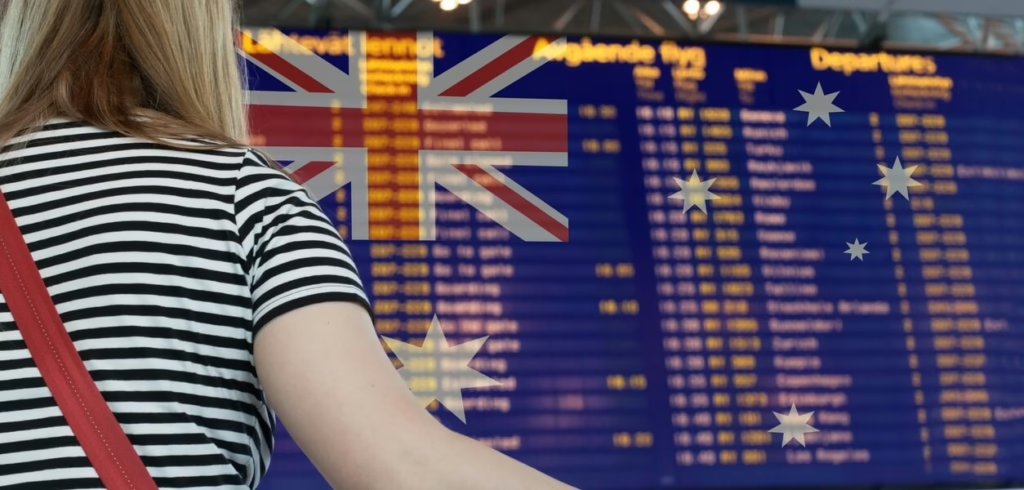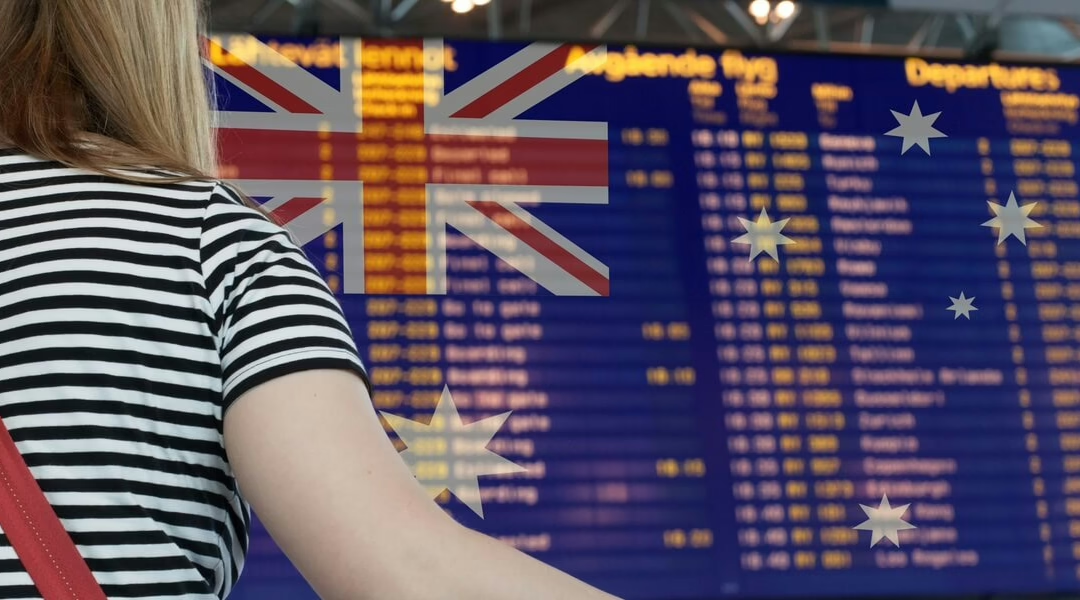
For many Australians, the idea of retiring overseas is more than just a lifestyle dream — it’s a practical plan. Whether driven by family ties, better weather, or a more affordable cost of living, an increasing number of retirees are exploring life beyond Australia.
But taking your Age Pension with you isn’t as simple as booking a one-way flight. Centrelink has strict portability rules that can significantly impact what you’re paid, when you’re paid, and how long those payments continue. Planning ahead – with a full understanding of income tests, asset rules, and international agreements – can help make that dream retirement a sustainable reality.
Popular destinations
Australians choose to retire overseas for a range of reasons, and a few locations consistently stand out:
- New Zealand
Just across the Tasman, New Zealand appeals for its cultural similarities, proximity and ease of travel. It’s a natural choice for many Australians with family connections or prior work history there.
Tip: If you’ve lived or worked in both Australia and New Zealand, the time spent in each may have already helped you qualify for the Age Pension. - Southeast Asia
Countries like Thailand, Malaysia, Vietnam, and Indonesia (particularly Bali) are favoured for their warm climates and low cost of living. Many Australians find their retirement savings go further here, especially in areas such as healthcare and accommodation. - Southern Europe
Italy, Portugal, and Spain continue to attract Australian retirees seeking a Mediterranean lifestyle, good healthcare systems, and accessible retirement visas. While these countries are not as close to home, they offer thriving expat communities and a slower pace of life.
Wherever you choose, it’s essential to consider the local visa rules, tax systems, and support services – and how Centrelink’s portability rules will apply to your specific situation.
Understanding portability: how long your pension lasts overseas
If you’re already receiving the Age Pension and move overseas permanently, your rate of payment may change after 26 weeks. Centrelink calls this the ‘outside Australia rate’, and it applies regardless of your financial situation or destination.
This reduced payment:
- removes the Energy Supplement,
- reduces the Pension Supplement to the basic rate and
- continues to be paid monthly in arrears, rather than fortnightly.
This is separate from proportional portability, which is based upon your Working Life Residency -and applies when you’re living outside Australia long term.
Working Life Residency and proportionality
Centrelink’s proportional portability rule applies when someone moves overseas permanently and has not lived in Australia for a full 35 years between the ages of 16 and Age Pension age. This rule reduces your Age Pension entitlement in proportion to the number of those years you were an Australian resident.
For example, if you were receiving $1,000 per fortnight before moving overseas, Centrelink will divide that into 35 equal portions which is $28.57. If you were only living in Australia for 10 years before leaving, you will only receive 10 portions. Your new payment would be $285.70 per fortnight. However, as mentioned above, you would start getting monthly payments not fortnightly so you go from $2,000 per month down to $571.40.
This rule can catch people off guard – particularly those who have worked internationally, lived abroad earlier in life, or migrated to Australia later.
Even if you qualify for the Age Pension under one of Australia’s international social security agreements, your payment overseas may still be reduced under this proportionality rule.
Chris and Jane:
Should they rent out the home or sell and invest in super?
Members, Chris and Jane had two key questions before relocating overseas. They both had over 35 years of Working Life Residency, meaning their Age Pension was portable at the reduced ‘Outside Australia’ rates. But they were weighing up two financial strategies:
- Renting out their Australian home:
They planned to rely on rental income while living abroad in Greece. Centrelink treats rental income as gross rent minus allowable deductions, such as council rates, property management fees, and repairs. The property’s value (less any mortgage) was included in the assets test. - Selling the home and contributing to superannuation:
Their alternative plan was to contribute the sale proceeds into super and draw a regular income via an Account-Based Pension (ABP). In this case, the full super balance would be assessed under the assets test, and the income drawn would be deemed under Centrelink’s income test — regardless of the actual returns.
While both strategies had pros and cons, they wanted clarity on how each would affect their Age Pension. Whilst selling the home and contributing to super meant the value of the home still counted under the asset test, the income assessment for Centrelink changed. Also, they would have additional flexibility with drawing a regular income that could also meet unexpected capital expenditure.
This real-life scenario illustrates the complexity of retiring overseas, especially when balancing home ownership, income planning, and Centrelink rules.
International agreements and what they cover
Australia has more than 30 international social security agreements with countries including New Zealand, Spain, Portugal, Italy, and Greece.
These agreements are designed to help people who’ve lived or worked in more than one country access their Age Pension entitlements. They typically allow:
- Combining residency: You can count the time spent in a partner country toward the 10 year residency rule.
- Lodging a claim from overseas: In theory, you can apply for the Australian Age Pension while living in an agreement country – but this rarely works smoothly in practice.
Practical tip:
Although you can technically lodge a claim from overseas under an agreement, we’ve found this often leads to complex follow-up, delays, or even declined claims.
For that reason, we strongly recommend lodging your application while in Australia.
Our service is specifically designed to support people who are already in Australia or plan to return before applying.
Important distinction: the two-year rule for returning Australians
If you’re returning to Australia after living overseas and want to apply for the Age Pension, there’s an important rule to understand. You must remain in Australia for two years before your pension becomes portable – meaning you can’t receive the full overseas rate straight away.
You need to live in Australia continuously for two years before your Age Pension becomes portable. If you leave the country before the two years are up, your payments may stop or be reduced, depending on your situation.
This rule is often overlooked and can catch people off guard – especially if they return expecting to travel again or move back overseas soon after resettling.
Planning tips from Smartraveller
The Department of Foreign Affairs and Trade’s Smartraveller platform provides practical guidance for retirees thinking about moving overseas. Their advice includes:
- Trial before you commit: Spend 6-12 months in your chosen country before making a permanent move
- Plan your healthcare: Australia’s Medicare system doesn’t cover you overseas, and reciprocal healthcare agreements are limited. Private international health insurance is essential — and can be expensive
- Understand visa requirements: Many retirement visas require proof of financial self-sufficiency and do not permit you to work
- Keep your options open: If your circumstances change, such as health or family needs, returning to Australia can be costly unless planned for
Further reading: Smartraveller – Retiring Overseas
Making the move:
Get informed, not caught out
Retiring overseas can offer lifestyle and financial benefits — but only if you’re fully prepared. Your Age Pension doesn’t automatically travel with you at the same rate, and decisions like keeping your home or shifting assets into super can have long-term affects on your entitlements.
If you’re considering a move or supporting a family member in their decision, a Retirement Advice or Entitlements Consultation can help you navigate Centrelink’s rules and make the most of your financial position – both here and overseas.
We’d love to hear from you
Have you recently returned to Australia after living overseas?
What surprised you most about restarting Centrelink payments?
Or navigating the two-year portability rule?
What questions or concerns do you have about how long you’ll need to stay in Australia to keep your payments?






Rules say:
If you return to Australia to live after residing overseas, there is no waiting period to claim Age Pension. You must still meet all qualification rules to be eligible for payment. If granted, your payment may stop if you travel outside Australia within 2 years of returning to live.
The word ‘may’ in there is a bit confusing. Are there some more definite rules about that?
Hi David, our apologies for creating any doubt or confusion, the intent was to clarify that the outcome could be one or the other. That is, you payments may be stopped OR reduced meaning one of those two things WILL happen but which one depends on your situation. It was not meant to imply that it might not be an issue at all. As per section 7.1.4 – Requirements for former residents of Australia receiving a portable pension of the Social Security Law guide, “a former resident who returns to Australia and is granted Age (Pension)… cannot take that pension outside Australia if they leave within 2 years of having resumed residence in Australia.”
Does this apply to people leaving Australia for a holiday or compassionate grounds but then returning? There must be precedents for this?
Hi Jim, as per the link there are a couple of exceptions but they are very specific and do not include holidays or compassionate grounds as you suggested. We have had a customer who left the country for only 3 days to attend a funeral but their payments were still impacted.
moving to nz in 2026. I get age pension hubby gets dsp. we’ve both lived here 60 years +. will we get the same in nz? we will buy a house there.
Hi Judy, as per the article you will at a minimum lose the energy supplement and potentially the pension supplement also but the main concern of the 35yr rule will not impact you.
Hi Jim
I missed my proof of life notification so the stopped my age pension if I returning to Australia and visiting a centrelink office, will my payments restored
Tanks Wolfgang
Hello I am a native born Australian Citizen and meet the 35 year residency plus . I am 68 years old and have not applied for the pension as I have lived overseas since 2019 with regular trips back to Australia. Based on this basic info above , would I have to sit in what I call the naughty corner for pension portability. Thanks for any input.
Hi Gary, given the complexities and importance of niche factors we’d need to have a consultation with you to discuss how you specifically would be assessed. You can make a booking HERE.
Be careful if you are a New Zealand citizen who has lived in Australian under the SCV category which is classed as a temporary residency even if you’ve live there 20 years. We can’t make our age pensions portable to live in countries outside SSA countries like Bali and Thailand. It is discrimination against your nationality although Centrelink says it not sits because of legislation. In other words the legislation discriminates. What this mean is you have worked all your life in NZ and Australia, come to that dream of retiring overseas and you find you are blocked from doing that. No NZer, Australian, UK, US, Canadian or any other age pension has this restriction, only NZ citizens who live on a SCV.
Hi Brenton, the Special Category Visa (SCV) for our Kiwi brethren can be confusing. Thankfully the social security agreement we have with New Zealand often supersedes the SCV so it may not be as dire as you fear.
Hi Steven, What do you mean by this, can you be more specific explaining how the social security agreement we have with New Zealand often supersedes the SCV?
Where can I get more information?
Hi Brenton you can review the Social Security Agreement itself HERE. If you have further questions or would like help understanding the guid you can book a consultation with one of our specialists.
Hello
We are already receiving the Age Pension. We will move to overseas to live there permanently.
If we sell the house, will it be counted as our assets, but we will be buying the property overseas.
Should we make our report about our financial position and assets while we will be living permanently overseas?
Will our property in Spain be counted as the main residency home, which is excluded from the test?
Thanks
Hi Alison, to properly answer your queries we would need to have a consultation with you as it is not a simple yes/no answer. You can make a booking HERE.
Im eligible for the pension but have not applied yet.
I have lived overseas for 14 years but have the 35 years in Australia paying tax as a resident.
I know the 2year rule for portability.
I can return to Australia and apply, once I get the pension I can travel out of Australia on holidays and understand my pension will stop for the time I’m away. My question is how much time does someone have to spend in Australia during the 2 years and how long can you be out of Australia each time you leave?
Hi Robert, Centrelink assess these situations on a case by case basis to avoid people trying to flout the rules so there is no definitive answer/time period.
I retired aged 56 to se Asia
Am now nearly 62 and will return to Australia when I’m 65 to do my time then leave when l start receiving my pension.
I am an Australian citizen and have worked 40years.
Do you think I will encounter any problems?
Hi Anthony, based on your explanation you should be fine to proceed 🙂
Thank you very much ??
Probably will need your help when I return.
if you move overseas to live and leave your assets in Australia ( super, term deposits, shares) how are these assets taxed in the future & are you still a tax resident of this country ??
Hi Craig, our specialty is Centrelink and the Age Pension which are governed by Social Security Law. The ATO are governed by Tax Law. Therefore we’d recommend speaking with an accountant or tax agent for clarity.